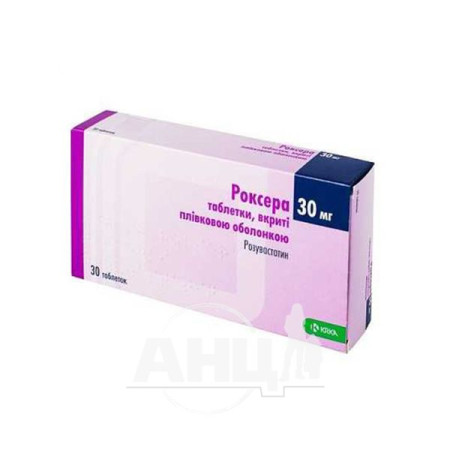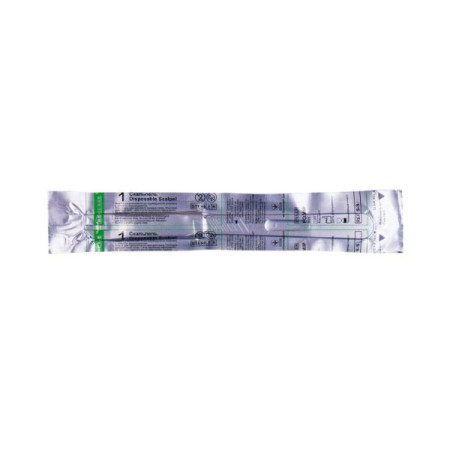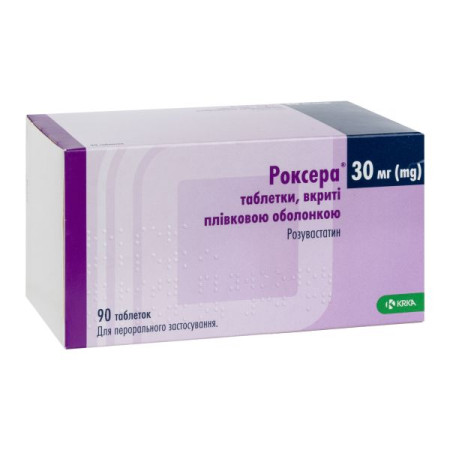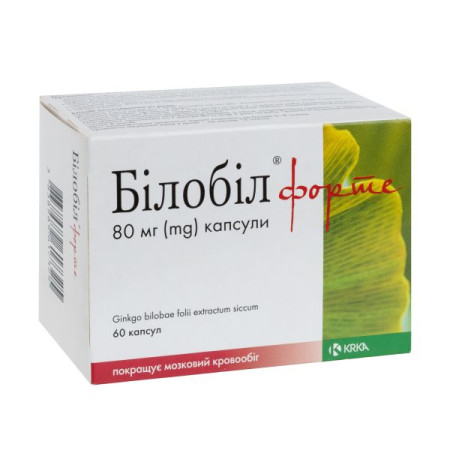Lorista film-coated tablets 50 mg blister No. 90

Instructions for Lorista film-coated tablets 50 mg blister No. 90
Composition
active ingredient: losartan;
1 film-coated tablet contains 50 mg of losartan potassium;
excipients: celactose (contains lactose monohydrate and powdered cellulose), corn starch, pregelatinized starch, microcrystalline cellulose, colloidal anhydrous silica, magnesium stearate, hypromellose, talc, propylene glycol, titanium dioxide (E 171).
Dosage form
Film-coated tablets.
Main physicochemical properties: 50 mg tablets: white, round, slightly biconvex, film-coated tablets with beveled edges and a score on one side.
Pharmacotherapeutic group
Agents acting on the renin-angiotensin system. Simple preparations of angiotensin II receptor antagonists. ATC code C09C A01.
Pharmacological properties
Pharmacodynamics
Losartan is a synthetic angiotensin II (type AT1) receptor antagonist for oral administration. Angiotensin II, a potent vasoconstrictor, is the active hormone of the renin-angiotensin system and one of the most important factors in the pathophysiology of arterial hypertension. Angiotensin II binds to the AT1 receptor, which is found in many tissues (e.g., vascular smooth muscle, adrenal glands, kidneys, and heart), determining a number of important biological effects, including vasoconstriction and aldosterone release. Angiotensin II also stimulates the proliferation of smooth muscle cells.
Losartan binds selectively to the AT1 receptor. In vitro and in vivo, losartan and its pharmacologically active metabolite, the carboxylic acid (E-3174), block all physiologically relevant effects of angiotensin II, regardless of the source or route of synthesis.
Losartan does not bind to or block other hormone receptors or ion channels important for cardiovascular regulation. Losartan does not inhibit ACE (kinase II), an enzyme that promotes the breakdown of bradykinin. As a result, there is no increase in undesirable effects mediated by bradykinin. During the use of losartan, the elimination of the negative feedback loop of angiotensin II on renin secretion leads to an increase in plasma renin activity (ARA). This increase in ARA leads to an increase in plasma angiotensin II concentration. Although this increase occurs, antihypertensive activity and suppression of plasma aldosterone concentration are maintained, indicating effective blockade of angiotensin II receptors. After discontinuation of treatment with losartan, plasma renin activity and angiotensin II levels return to baseline within 3 days.
Both losartan and its major metabolite have a higher affinity for AT1 receptors than for AT2 receptors. The active metabolite is 10-40 times more active than losartan.
Pharmacokinetics
Absorption
After oral administration, losartan is well absorbed and undergoes first-pass metabolism to form the active carboxylic acid metabolite and inactive metabolites. The systemic bioavailability of losartan tablets is approximately 33%. Mean peak concentrations of losartan and its active metabolite are reached after 1 hour and 3-4 hours, respectively.
Distribution
More than 99% of losartan and its active metabolite are bound to plasma proteins, primarily albumin. The volume of distribution of losartan is 34 liters.
Biotransformation
Approximately 14% of losartan is converted to the active metabolite after intravenous or oral administration. Following intravenous and oral administration of 14C-labeled losartan potassium, the radioactivity in circulating plasma is generally characterized by losartan and its metabolite. Minimal conversion of losartan to its active metabolite was observed in approximately 1% of cases.
In addition to the active metabolite, inactive metabolites are also formed.
Breeding
The plasma clearance of losartan and its active metabolite is 600 ml/min and 50 ml/min, respectively. The renal clearance of losartan and its active metabolite is approximately 74 ml/min and 26 ml/min, respectively. When losartan is administered orally, approximately 4% of the dose is excreted unchanged in the urine and approximately 6% of the dose is excreted in the urine as the active metabolite. The pharmacokinetics of losartan and its active metabolite are linear over oral doses of losartan potassium up to 200 mg.
After oral administration, plasma concentrations of losartan and its active metabolite decline polyexponentially with terminal half-lives of approximately 2 hours and 6-9 hours, respectively. At a dose of 100 mg administered once daily, losartan and its active metabolite do not accumulate significantly in plasma.
Losartan and its metabolites are excreted in both bile and urine. After oral/intravenous administration of 14C-labeled losartan, approximately 35%/43% of the radiolabeled drug was recovered in urine and 58%/50% in feces.
Certain patient groups
Plasma concentrations of losartan were 2-fold higher in hypertensive women compared to men, while plasma concentrations of the active metabolite were not significantly different between men and women.
When administered orally to patients with mild to moderate alcoholic cirrhosis of the liver, plasma concentrations of losartan and its active metabolite were 5 and 1.7 times higher, respectively, than in young male volunteers.
Plasma concentrations of losartan in patients with creatinine clearance above 10 ml/min did not differ from those in subjects with normal renal function. When comparing the area under the concentration-time curve (AUC) in patients with normal renal function, the AUC of losartan was approximately 2-fold higher than in patients on hemodialysis.
Plasma concentrations of the active metabolite are not altered in patients with renal impairment or patients undergoing hemodialysis.
Losartan and its active metabolite cannot be removed by hemodialysis.
Pharmacokinetics in children
The pharmacokinetics of losartan were studied in 50 hypertensive children aged 1 month to 16 years after oral administration once daily at doses ranging from 0.54 to 0.77 mg/kg (average doses).
The results showed that the active metabolite of losartan is formed in patients of all age groups. The results indicate approximately similar pharmacokinetics of losartan after oral administration in newborns and preschool and school-aged children.
The pharmacokinetic parameters of the metabolite differed more depending on the age group. When comparing preschool children and adolescents, these differences were statistically significant. Exposure in newborns and children under 2 years of age was relatively high.
Indication
Treatment of essential hypertension in adults and children aged 6 years and over; treatment of renal disease in adult patients with hypertension and type 2 diabetes mellitus with proteinuria ≥ 0.5 g/day as part of antihypertensive therapy; treatment of chronic heart failure (in patients aged 60 years and over) when the use of angiotensin-converting enzyme (ACE) inhibitors is considered impossible due to incompatibility, especially in the presence of cough, or is contraindicated. Patients with heart failure whose condition has been stabilized on an ACE inhibitor should not be transferred to losartan treatment. The patient should have a left ventricular ejection fraction ≤ 40%, be clinically stable, and be on the established treatment regimen for chronic heart failure; reducing the risk of stroke in adult patients with arterial hypertension and left ventricular hypertrophy, as documented by ECG.
Contraindication
Hypersensitivity to losartan or to any other component of the drug.
Pregnant women or women planning to become pregnant (see section "Use during pregnancy and lactation"). Severe hepatic impairment. Concomitant use with aliskiren in patients with diabetes mellitus or renal impairment (GFR <60 ml/min/1.73m2) (see sections "Special warnings and precautions for use" and "Interaction with other medicinal products and other forms of interaction").
Interaction with other medicinal products and other types of interactions
With the simultaneous use of angiotensin II receptor antagonists and non-steroidal anti-inflammatory drugs (e.g. selective cyclooxygenase-2 (COX-2) inhibitors, acetylsalicylic acid at anti-inflammatory doses, non-selective NSAIDs), the antihypertensive effect may be weakened. The simultaneous use of angiotensin II antagonists or diuretics with NSAIDs may lead to an increased risk of worsening of renal function, including the possible development of acute renal failure, as well as an increase in serum potassium, especially in patients with pre-existing renal impairment. Such a combination should be prescribed with caution, especially in elderly patients. Patients should be adequately hydrated, and consideration should be given to monitoring renal function after initiation of concomitant therapy and periodically thereafter.
Studies have shown that dual blockade of the RAAS with concomitant use of ACE inhibitors, angiotensin II receptor antagonists or aliskiren increases the risk of adverse reactions such as hypotension, hyperkalemia and changes in renal function, including acute renal failure, compared with the use of a single agent of the renin-angiotensin-aldosterone system (see sections "Contraindications", "Special instructions for use").
Application features
Angioedema
Angioedema may occur. Patients with a history of angioedema (swelling of the face, lips, throat and/or tongue) should be monitored frequently.
Arterial hypotension and water and electrolyte imbalance
Symptomatic hypotension, especially after the first dose or after dose increases, may occur in patients with reduced intravascular volume or sodium depletion caused by the use of potent diuretics, dietary salt restriction, diarrhea, or vomiting. Such conditions should be corrected before starting treatment with Lorista® or the initial dose should be reduced. The same recommendations apply to children aged 6 to 18 years.
Electrolyte imbalance
Electrolyte imbalance is common in patients with renal impairment (with or without diabetes mellitus) and should be considered. In a clinical trial in patients with type 2 diabetes mellitus and nephropathy, the incidence of hyperkalemia was higher in patients treated with losartan than in the placebo group. Therefore, frequent monitoring of plasma potassium and creatinine clearance should be considered, especially in patients with heart failure and creatinine clearance of 30-50 ml/min.
The concomitant use of losartan and potassium-sparing diuretics, potassium supplements, and potassium-containing salt substitutes is not recommended.
Liver dysfunction
Based on pharmacokinetic data indicating a significant increase in plasma concentrations of losartan in patients with cirrhosis, consideration should be given to reducing the dose in patients with a history of hepatic impairment. There is no therapeutic experience with losartan in patients with severe hepatic impairment, and losartan should not be used in such patients.
Losartan is not recommended for use in children with liver impairment.
Kidney dysfunction
Changes in renal function, including renal failure, have been reported, which have been associated with inhibition of the renin-angiotensin system (especially in patients whose renal function depends on the renin-angiotensin-aldosterone system, i.e. patients with severe heart failure or pre-existing renal impairment).
Drugs that affect the renin-angiotensin-aldosterone system may cause increases in blood urea and serum creatinine in patients with bilateral renal artery stenosis or stenosis of the artery to a solitary kidney. These changes in renal function may be reversible upon discontinuation of therapy. Losartan should be used with caution in patients with bilateral renal artery stenosis or stenosis of the artery to a solitary kidney.
Use in children with renal impairment
Losartan is not recommended for use in children with a glomerular filtration rate < 30 ml/min/1.73 m2, as there are no relevant data on its use.
Renal function should be monitored regularly during treatment with losartan, as it may deteriorate, especially when losartan is used in the presence of other pathological conditions (fever, dehydration) that may affect renal function.
Concomitant use of losartan and ACE inhibitors worsens kidney function, so this combination is not recommended.
Kidney transplantation
There is no experience regarding the safety of the drug in patients who have recently undergone a kidney transplant.
Primary hyperaldosteronism
Patients with primary hyperaldosteronism generally do not respond to antihypertensive drugs that act by inhibiting the renin-angiotensin system. Therefore, Lorista® is not recommended for this group of patients.
As with other antihypertensive drugs, excessive reduction in blood pressure in patients with ischemic coronary artery disease and cerebrovascular disease may lead to the development of myocardial infarction or stroke.
Heart failure
As with other drugs that affect the renin-angiotensin-aldosterone system, there is a risk of severe hypotension and (often acute) renal impairment in patients with heart failure with or without renal impairment.
There is insufficient therapeutic experience with losartan in patients with heart failure and concomitant severe renal impairment, in patients with severe heart failure (NYHA class IV), and in patients with heart failure and symptomatic, life-threatening cardiac arrhythmias. Therefore, losartan should be used with caution in this group of patients. Caution should be exercised when combining losartan with β-blockers.
Aortic and mitral valve stenosis, obstructive hypertrophic cardiomyopathy
As with other vasodilators, the drug should be administered with extreme caution to patients with aortic or mitral valve stenosis or obstructive hypertrophic cardiomyopathy.
Pregnancy
Angiotensin II receptor antagonists should not be initiated during pregnancy. Unless continued ARB therapy is considered essential, patients planning pregnancy should be changed to alternative antihypertensive treatments which have an established safety profile for use in pregnancy. When pregnancy is diagnosed, treatment with ARBs should be stopped immediately, and, if appropriate, alternative therapy should be started.
Other warnings and cautions
As has been established for angiotensin-converting enzyme inhibitors, losartan and other angiotensin antagonists are less effective in lowering blood pressure in black patients than in other patients, possibly because of lower renin activity in this group of hypertensive patients.
Special information about some of the excipients
Lorista® contains lactose. Patients with rare hereditary forms of galactose intolerance, the Lapp lactase deficiency or glucose-galactose malabsorption should not take this medicine.
Dual blockade of the renin-angiotensin-aldosterone system (RAAS)
The concomitant use of aliskiren and angiotensin II receptor antagonists or ACE inhibitors increases the risk of hypotension, hyperkalemia and changes in renal function, including acute renal failure. Due to dual blockade of the renin-angiotensin-aldosterone system (RAAS), the concomitant use of aliskiren and angiotensin II receptor antagonists or ACE inhibitors is not recommended (see section 4.5). If dual RAAS blockade is unavoidable, renal function, electrolytes and blood pressure should be closely monitored. Angiotensin II receptor antagonists and ACE inhibitors should not be used concomitantly in patients with diabetes.
Ability to influence reaction speed when driving vehicles or other mechanisms
No studies have been conducted on the effect of the drug on the ability to drive and use machines. However, it should be borne in mind that side effects such as dizziness and drowsiness may occur, especially at the beginning of treatment and when the dose of the drug is increased.
Use during pregnancy or breastfeeding
Pregnancy
The drug is contraindicated for use in pregnant women or women planning to become pregnant. If pregnancy is confirmed during treatment with the drug, its use should be immediately discontinued and replaced with another drug approved for use in pregnant women.
Epidemiological data on the risk of teratogenic effects due to the use of ACE inhibitors during the first trimester of pregnancy are not conclusive, but a small increase in risk cannot be excluded. Since there are no controlled epidemiological data on the risk of the use of angiotensin II receptor antagonists (ARBs), similar risks may exist for this class of drugs. Unless continued ARB therapy is considered essential, patients planning pregnancy should be changed to alternative antihypertensive treatments which have an established safety profile for use in pregnancy. When pregnancy is diagnosed, ARB treatment should be stopped immediately, and, if appropriate, alternative therapy should be started. The use of ARBs during the second and third trimesters of pregnancy is known to induce fetotoxicity (decreased renal function, oligohydramnios, skull ossification retardation) and neonatal toxicity (renal failure, hypotension, hyperkalemia).
If ARBs have been used during the second trimester of pregnancy, ultrasound examination to check renal function and the condition of the skull bones is recommended.
Breastfeeding period
Because no information is available regarding the use of losartan during breast-feeding, losartan is not recommended. Alternative treatments with better established safety profiles during breast-feeding are preferable, especially while nursing a newborn or preterm infant.
Method of administration and doses
Losartan tablets should be taken with a glass of water.
The use of the drug does not depend on food intake.
Arterial hypertension
Usually the initial and maintenance dose for most patients is 50 mg of the drug 1 time per day (1 tablet of Lorista® 50 mg). The maximum antihypertensive effect is achieved 3-6 weeks after the start of treatment. For some patients, it may be more beneficial to increase the dose of the drug to 100 mg 1 time per day (in the morning).
Lorista® can be used in combination with other antihypertensive drugs, especially diuretics (e.g. hydrochlorothiazide).
Patients with hypertension and type 2 diabetes mellitus with proteinuria ≥ 0.5 g/day
The usual starting dose is 50 mg (1 tablet of Lorista®) once daily. The dose may be increased to 100 mg once daily depending on blood pressure response 1 month after initiation of treatment. Lorista® can be used with other antihypertensive agents (e.g. diuretics, calcium channel blockers, α- or β-receptor blockers and centrally acting agents), as well as with insulin and other commonly used hypoglycemic agents (e.g. sulfonylureas, glitazones and glucosidase inhibitors).
Heart failure
The usual starting dose of Lorista® in patients with chronic heart failure is 12.5 mg once daily. The dose is usually titrated at weekly intervals (i.e. 12.5 mg daily, 25 mg daily, 50 mg daily) to the usual maintenance dose of 50 mg (1 tablet of Lorista®) once daily depending on individual tolerability.
Reduction in the risk of stroke in patients with arterial hypertension and left ventricular hypertrophy, documented by ECG
The usual starting dose is 50 mg losartan (1 tablet of Lorista® 50 mg) once daily. Depending on the response to treatment, low-dose hydrochlorothiazide should be added and/or the dose of Lorista® should be increased to 100 mg once daily.
Certain patient groups
Use in patients with reduced circulating blood volume
Patients with reduced circulating blood volume (e.g., due to treatment with high doses of diuretics) should begin therapy with a dose of 25 mg once daily.
Use in patients with renal impairment and patients undergoing hemodialysis sessions
When prescribing Lorista® to patients with impaired renal function and patients undergoing hemodialysis sessions, initial dose adjustment is not required.
Use in patients with hepatic impairment
For patients with a history of hepatic impairment, a lower dose should be considered. There is no experience in patients with severe hepatic impairment, therefore losartan is contraindicated in this group of patients.
Use in children
Data on the efficacy and safety of losartan in children aged 6-18 years for the treatment of arterial hypertension are limited. There are also limited pharmacokinetic data in children with arterial hypertension from 1 month of age. For children who can swallow tablets and whose body weight is more than 20 kg and less than 50 kg, the recommended dose is 25 mg once a day. In exceptional cases, the dose can be increased to a maximum of 50 mg once a day. The dose should be adjusted depending on the effect on blood pressure. In patients weighing more than 50 kg, the usual single dose is 50 mg once a day. In exceptional cases, the dose can be increased to a maximum of 100 mg once a day. The use of doses exceeding 1.4 mg/kg (or more than 100 mg) per day has not been studied in children.
Losartan is not recommended for use in children under 6 years of age, as there is insufficient data on the use of the drug in this patient group.
The drug is not recommended for use in children with a glomerular filtration rate < 30 ml/min/1.73 m2, as there are no relevant data on use.
Losartan is also not recommended for use in children with impaired liver function.
Use in elderly patients
There is generally no need to adjust the starting dose for elderly patients, although consideration should be given to prescribing the drug at a starting dose of 25 mg for patients aged 75 years and older.
Children
Losartan is not recommended for use in children under 6 years of age, as data are limited in this patient group.
Overdose
Symptoms
There are limited data on overdose with losartan. Depending on the degree of intoxication, symptoms such as hypotension, tachycardia, and possibly bradycardia may occur.
Treatment depends on the length of time since ingestion, the nature and severity of symptoms. The priority should be to stabilize cardiovascular function. After oral overdose, activated charcoal is indicated in an appropriate dose. Induction of vomiting and gastric lavage are recommended. Subsequently, vital signs should be monitored frequently and adjusted as necessary. Losartan and its active metabolites are not removed by hemodialysis.
Adverse reactions
The most commonly reported adverse reaction in clinical trials was dizziness.
Children
The adverse reaction profile in children is similar to that in adults. Data on adverse reactions in children are limited.
Arterial hypertension
From the nervous system: dizziness, drowsiness, headache, insomnia, muscle cramps.
Cardiac: palpitations, angina pectoris.
Vascular: symptomatic hypotension (especially in patients with intravascular dehydration, e.g. in patients with severe heart failure or during treatment with high doses of diuretics), dose-dependent orthostatic effect.
Skin and subcutaneous tissue disorders: rash.
Gastrointestinal: abdominal pain, dyspepsia, constipation.
Respiratory system: cough, runny nose, sinusitis, pharyngitis, upper respiratory tract infection.
General condition and disorders related to the method of administration of the drug: asthenia, weakness, edema.
Laboratory values. Changes in standard laboratory values have rarely been associated with the use of losartan tablets. ALT levels have been rarely increased and usually normalized after discontinuation of the drug. Hyperkalemia (serum potassium level > 5.5 mmol/L) has been observed in 1.5% of patients with hypertension.
Patients with left ventricular hypertrophy
Nervous system: dizziness.
From the side of the organs of hearing and labyrinth: vertigo.
General conditions and disorders related to the method of administration of the drug: asthenia/weakness.
Chronic heart failure
From the nervous system: dizziness, headache, paresthesia.
Cardiac: syncope, atrial fibrillation, stroke.
Vascular: arterial hypotension, including a dose-dependent orthostatic effect.
Respiratory, thoracic and mediastinal disorders: dyspnea.
Gastrointestinal: diarrhea, nausea, vomiting.
Skin and subcutaneous tissue disorders: urticaria, itching, rash.
Renal and urinary disorders: renal dysfunction, renal failure
General conditions and disorders related to the method of administration of the drug: asthenia/weakness.
Laboratory indicators: hyperkalemia, increased blood urea, serum creatinine, and serum potassium.
Arterial hypertension and type II diabetes mellitus accompanied by kidney disease
Nervous system: dizziness.
Vascular disorders: arterial hypotension.
General conditions and disorders related to the method of administration of the drug: asthenia/weakness.
Laboratory indicators: hypoglycemia, hyperkalemia.
Additional adverse reactions
Blood and lymphatic system disorders: anemia.
Cardiac: syncope, palpitations.
Vascular: orthostatic hypotension.
Gastrointestinal: diarrhea.
Musculoskeletal and connective tissue disorders: back pain.
Renal and urinary disorders: urinary tract infections.
General conditions and disorders related to the method of administration of the drug: flu-like symptoms.
Laboratory indicators: hyperkalemia (in patients with type II diabetes mellitus and nephropathy).
Post-marketing surveillance
From the blood and lymphatic system: anemia, thrombocytopenia.
From the side of the organs of hearing and labyrinth: ringing in the ears.
Immune system disorders: Rare: hypersensitivity reactions (anaphylactic reactions, angioedema, including laryngeal and glottis swelling leading to airway obstruction and/or swelling of the face, lips, pharynx and/or tongue); some patients had a history of angioedema associated with the use of other drugs, including ACE inhibitors; vasculitis, including Henoch-Schönlein purpura.
Nervous system: migraine, dysgeusia.
Respiratory, thoracic and mediastinal disorders: cough.
Gastrointestinal: diarrhea, pancreatitis, vomiting.
General condition and disorders related to the method of administration of the drug: malaise.
Hepatobiliary disorders: hepatitis, liver dysfunction.
Skin and subcutaneous tissue disorders: urticaria, itching, rash, photosensitivity, erythroderma.
Musculoskeletal and connective tissue disorders: myalgia, arthralgia, rhabdomyolysis.
Reproductive system and breast disorders: erectile dysfunction/impotence.
Renal and urinary disorders: As a consequence of inhibition of the renin-angiotensin-aldosterone system, changes in renal function, including renal failure, have been reported in patients at risk; such changes in renal function may be reversible upon discontinuation of therapy.
Psychiatric: depression.
Laboratory indicators: hyponatremia.
Expiration date
5 years.
Storage conditions
Store at a temperature not exceeding 30 ° C. Keep out of the reach of children.
Packaging
10 tablets in a blister; 9 blisters in a cardboard box.
Vacation category
According to the recipe.
Producer
KRKA, d.d., Novo mesto, Slovenia.
TAD Pharma GmbH, Germany.
Location of the manufacturer and its business address
Šmarješka cesta 6, 8501 Novo mesto, Slovenia.
Heinz-Lochmann-Strasse 5, 27472 Cuxhaven, Germany.
There are no reviews for this product.
There are no reviews for this product, be the first to leave your review.
No questions about this product, be the first and ask your question.















